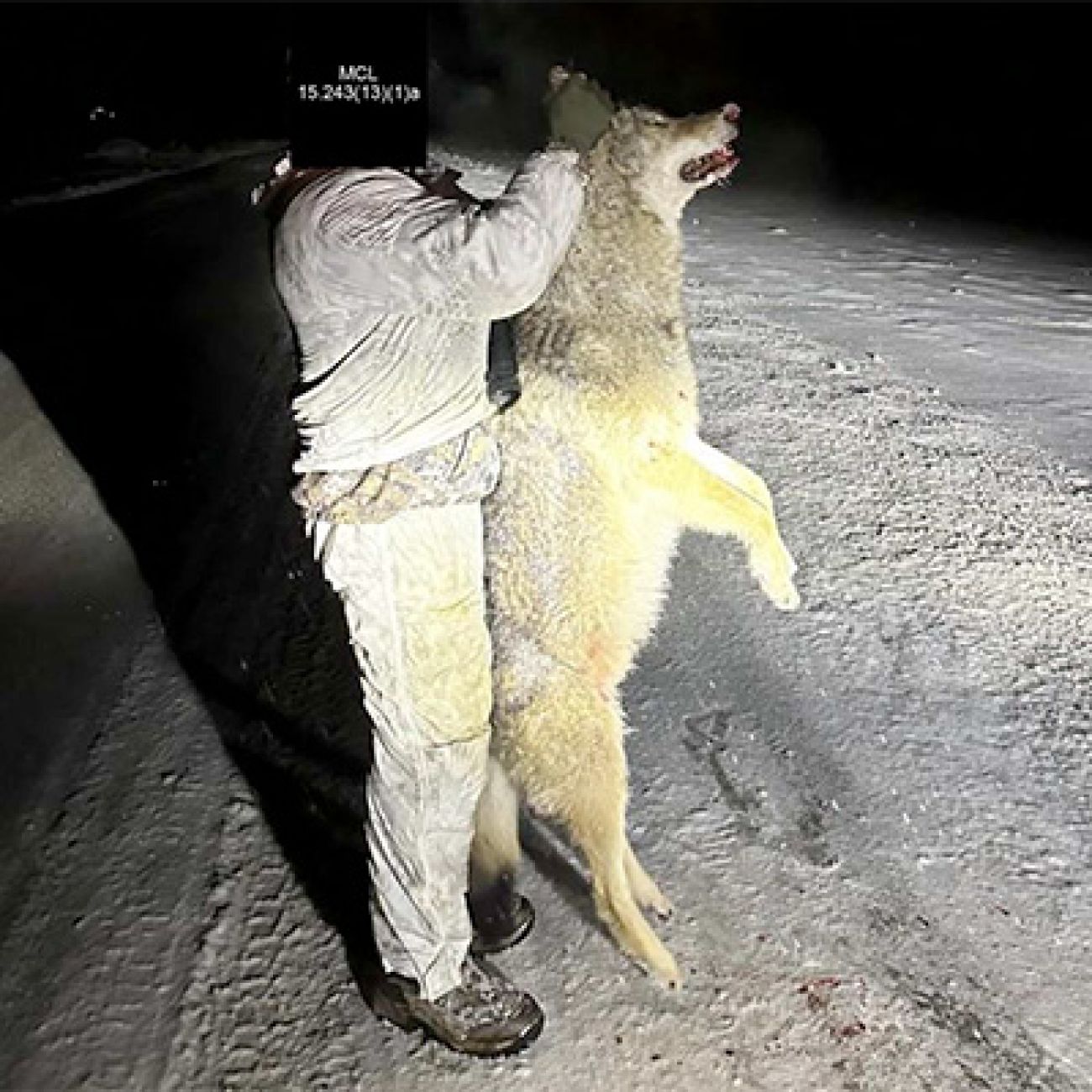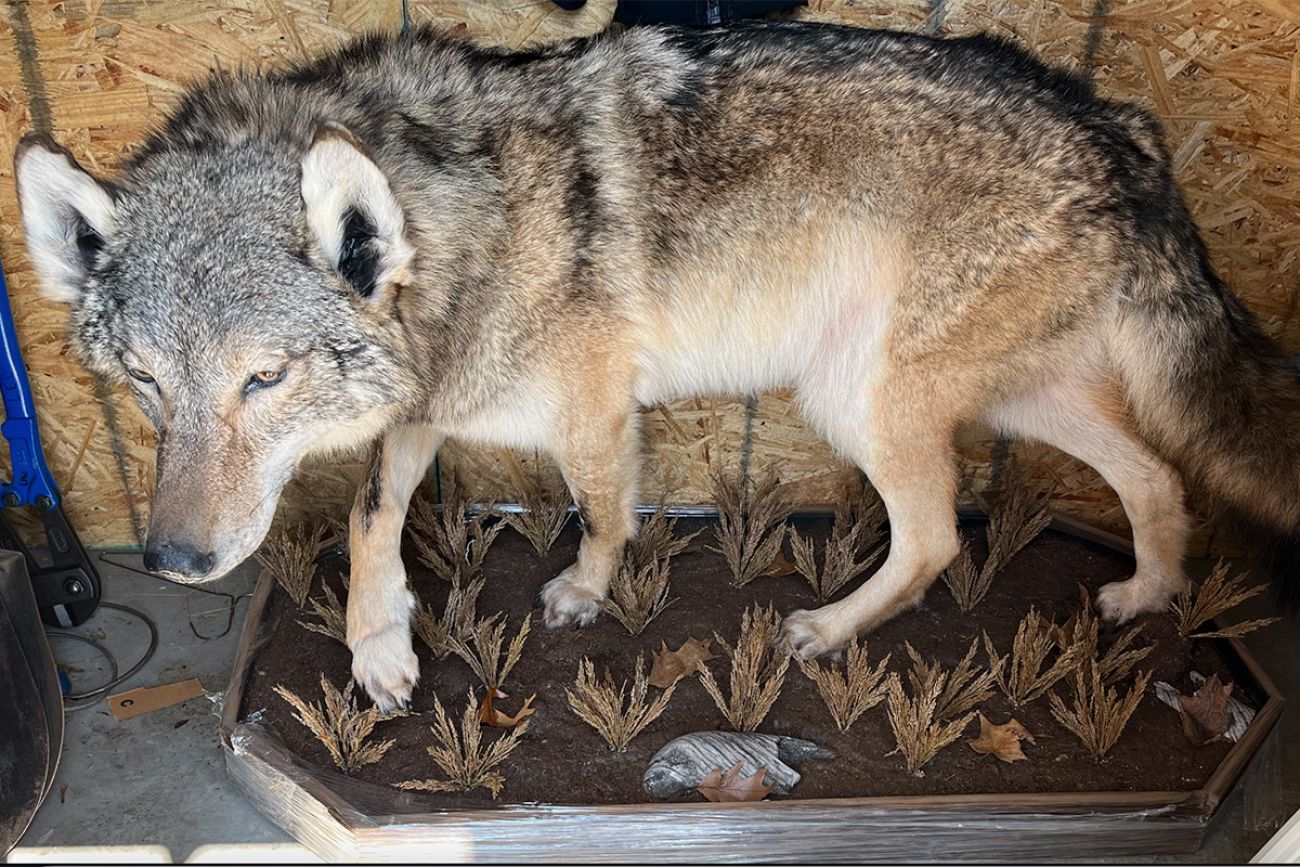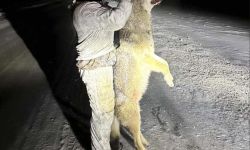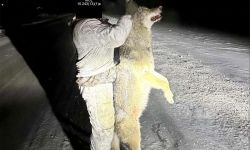Probe of wolf shot in south Michigan, far from habitat, focuses on trap wounds

- How did a wolf native to the Upper Peninsula wind up dead 300 miles away, shot by hunter who thought it was coyote?
- Records indicate the endangered animal had trap wounds on a paw that were ‘fairly fresh’
- A criminal investigation is underway and the wounds could be crucial to the probe
MARSHALL — The criminal investigation into the January killing of a wolf in southern Michigan — far from its known habitat —includes evidence suggesting it may have been injured by a foothold trap in the weeks before it was shot.
The death of the endangered animal near Marshall has puzzled investigators, who question whether a wolf could have wandered there from the Upper Peninsula. But the wound to the wolf’s front paw could offer clues, prompting some neighbors to speculate it may have been relocated before it was shot.
“Someone had to have brought it here purposely,” said Ashlee Shepherd, who lives near the scene of the shooting. The idea that a wolf crossed the Straits of Mackinac and made it to 300 miles away “just doesn’t make sense,” she added.
Records obtained by Bridge Michigan through the Freedom of Information Act support a hunter’s assertion that he shot the wolf in Fredonia Township, south of Marshall. The hunter told investigators he thought it was a coyote.
Along with incident reports, Bridge has obtained an audio file of a Department of Natural Resources law enforcement official’s April 8 interview with one of two hunters involved in the incident.
Related:
- Southern Michigan dead wolf mystery deepens; records suggest it was trapped
- Hunter should not face charges for killing wolf, Michigan GOP lawmakers say
- Dead wolf mystery in south Michigan deepens, prompts criminal probe
- Wolf killed in southern Michigan is first sighting in more than 100 years
The audio offers the first public, firsthand account of the wolf’s death.
The hunter, who has not been publicly identified, told investigators he didn’t notice a trap mark on the wolf’s paw after his companion shot the animal. But he referred to a past conversation with a DNR official who told him the wound appeared to be “fairly fresh,” possibly from within the past 12 weeks.
A necropsy tested the male wolf for immobilizing drugs (which could perhaps explain how it was far from its known habitat) and found none. The report also notes such drugs do not last long in an animal’s system.
Before it was shot, the animal had been in “very good physical condition,” according to the necropsy report.
DNR Capt. David Malloch told Bridge the investigation includes questions about how and when the wolf was injured by a trap, but said he would not “release specific details” as officers are trying to “determine what exactly took place.”
Great Lakes wolves are a federally-designated endangered species, which makes it illegal to trap, transport or kill them unless they pose a direct and immediate threat to human life. Doing so is punishable by up to a year in prison and a $50,000 fine.
DNR spokesperson Ed Golder said that the department will not assess the possibility of criminal charges until the investigation concludes.
“That’s standard practice whenever an endangered species is taken,” Golder said.
A prosecutor would ultimately decide whether to file charges.
Bridge on Friday spoke to a farmer who owns the land where the wolf was shot.
The man said he suspects the wolf may have been in the area for more than a year and could understand how the hunters could mistake it for a much smaller coyote.
The men were hunting late at night in winter, the farmer explained, and they were using a thermal vision scope to view the animal.
Bridge agreed not to name the man because he said he fears reprisals.

‘Holy heck. What the heck is that?’
A chronology of the night of the killing emerged from an April 8 interview between a coyote hunter from Battle Creek and an unidentified DNR law enforcement officer.
The hunter, whose name was redacted from records provided to Bridge, said he had a decade of experience, killing dozens of coyotes each year. His companion on Jan. 19 was a novice from the Marshall area whom he’d only recently met.
That night, the Battle Creek man told the investigator, the pair had been hunting for about an hour, using an electronic caller that mimics the sound of coyotes mating, when they saw what they thought was a coyote at about 10 p.m.
As the animal came closer, the Battle Creek man coached his companion to sight it through the heat-vision scope, and then shoot it in the chest with a .22-250 rifle at a distance of about 80 yards.
Then, he said, “I gave him a fist pump and said … You go get the coyote, I’ll get the caller.”
But as his companion struggled to move the heavy carcass, the Battle Creek man said he walked over to help.
“I turned my light on it, and I was like, ‘Holy heck, what the heck is that?’” he recounted to the investigator.
‘In awe’ of the wolf
At 84 pounds, the canine was well more than twice the size of an average coyote, which typically ranges between 25 and 40 pounds.
Still, the Battle Creek man said he didn’t suspect the animal was a wolf. He’d seen wolves in Canada, he told the investigator, and this animal was not “wolf colored.”
After dragging the carcass back to their vehicle, taking photos, FaceTiming an associate to show off the kill, and hunting for a couple more hours, the pair drove home. The Battle Creek man kept the carcass, intending to have it mounted.
The hunter said the next morning he called DNR conservation officer Jason McCullough, someone he knows personally, to ask if the agency would like to genetically test the animal.
According to a separate report obtained by Bridge, McCullough inquired with a colleague in the DNR’s wildlife division, who confirmed the desire to conduct testing.
The hunter proceeded to take the animal to a taxidermist, he told the investigator, and they “were in awe when they saw it.”
Reached by Bridge, the taxidermist declined to comment.
Brian Roell, the DNR’s leading wolf expert, told Bridge Michigan he was not made aware of the incident until several days later, when a colleague showed him photos that had been circulating on Facebook. He instantly recognized the animal as a wolf, he told Bridge.
Roell notified his bosses, and records indicate his division requested that law enforcement confiscate the carcass, but McCullough initially refused. By the time the request was heeded two days later, the wolf had been butchered in preparation for mounting.
Conservation officers seized what remained of the carcass, leaving the hide behind. Two months later, test results from multiple labs confirmed the animal was a wolf.
By then, its hide had been taxidermied. DNR officials confiscated the mount, but McCullough invited the hunters to a local DNR office to take photos with it.

That drew a rebuke from wolf advocates, and Malloch said the photo incident is being “looked at internally.”
With the animal now ID’d as a wolf, the hunter said he is mystified as to how it arrived in Fredonia Township, hundreds of miles south of its habitat.
Since the incident, he told the investigator, he has asked area landowners if they’d recently seen a large canid roaming the area, and all have answered “nope, nope, nope.”
“There’s probably a hundred trail cameras in a 5-mile radius right there, because everybody and their brother deer hunts over there,” the hunter said, “And nobody has came forward with any previous knowledge of it, that I’ve heard of.”
Neighbors interviewed by Bridge also said they had never seen a wolf-like animal in the area, although the farmer offered an account of what he believes could have been a wolf encounter.
They offered varying theories about how the wolf arrived in southern Michigan, including some who wonder if it was smuggled from the Upper Peninsula.
Or “someone got it as a pup to try to have as a pet,” then turned it loose when it became too much, surmised another neighbor, Nancy Eggelston.
Or, said Denise Hoyt, perhaps it was simply a “poor soul” who “just got lost and ended up in the wrong place.”
In the audio reviewed by Bridge, the hunter agreed to contact DNR officials if he heard any new information, and lamented that the agency confiscated the taxidermied hide. He said McCullough had told him that regardless of the genetic test results, he would get a cool mount out of the experience.
“Now I’m out of a $3,000 mount,” he told the investigator.
“If they become delisted,” he later asked, “could I maybe have it at that point?”
Michigan Environment Watch
Michigan Environment Watch examines how public policy, industry, and other factors interact with the state’s trove of natural resources.
- See full coverage
- Subscribe
- Share tips and questions with Bridge environment reporter Kelly House
Michigan Environment Watch is made possible by generous financial support from:
Our generous Environment Watch underwriters encourage Bridge Michigan readers to also support civic journalism by becoming Bridge members. Please consider joining today.
See what new members are saying about why they donated to Bridge Michigan:
- “In order for this information to be accurate and unbiased it must be underwritten by its readers, not by special interests.” - Larry S.
- “Not many other media sources report on the topics Bridge does.” - Susan B.
- “Your journalism is outstanding and rare these days.” - Mark S.
If you want to ensure the future of nonpartisan, nonprofit Michigan journalism, please become a member today. You, too, will be asked why you donated and maybe we'll feature your quote next time!






